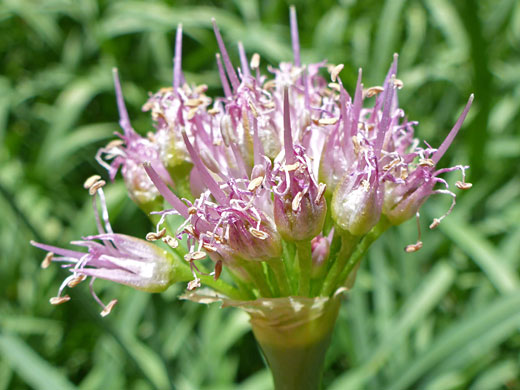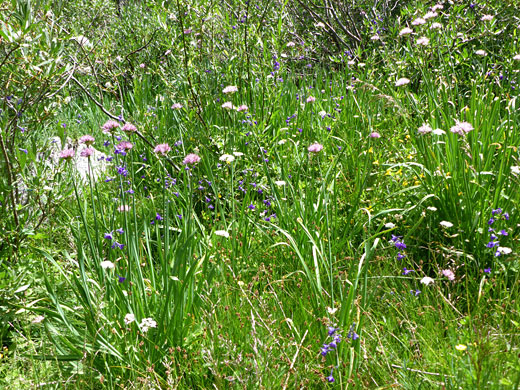Common name:
Swamp onion
Family:
Scientific name:
Allium validum
Main flower color:
Range:
Most of California, northwards to south Washington, and eastwards to Idaho
Height:
To 3 feet or more
Habitat:
Most meadows and bogs; 5,000 to 11,000 feet
Leaves:
Linear, narrow, some almost as long as the stem
Season:
June to August
Allium validum is one of the tallest onion species in the US, exceeding 3 feet in height. As its common name suggests, plants grow in moist, often marshy environments, and at medium to high elevations, in the Sierra Nevada, the Cascade Range and other mountains in the northwest. Plants typically produce between 3 and 6 leaves, pointing upwards, the longest almost to the same height as the stem. Leaves may be flat or slightly folded along the axis.
The compact, hemispherical inflorescence contains between 15 and 40 flowers, growing on short green pedicels. Flowers range in color from rich pink to white; they have protruding stamens, surrounded by a corolla that opens to five narrow, pointed, lanceolate lobes. Like most allium species, the oval-shaped bulbs are edible, though they are not particularly tasty. The plant is relatively common.
The compact, hemispherical inflorescence contains between 15 and 40 flowers, growing on short green pedicels. Flowers range in color from rich pink to white; they have protruding stamens, surrounded by a corolla that opens to five narrow, pointed, lanceolate lobes. Like most allium species, the oval-shaped bulbs are edible, though they are not particularly tasty. The plant is relatively common.
All Contents © Copyright The American Southwest | Comments and Questions | Contribute | Site Map





